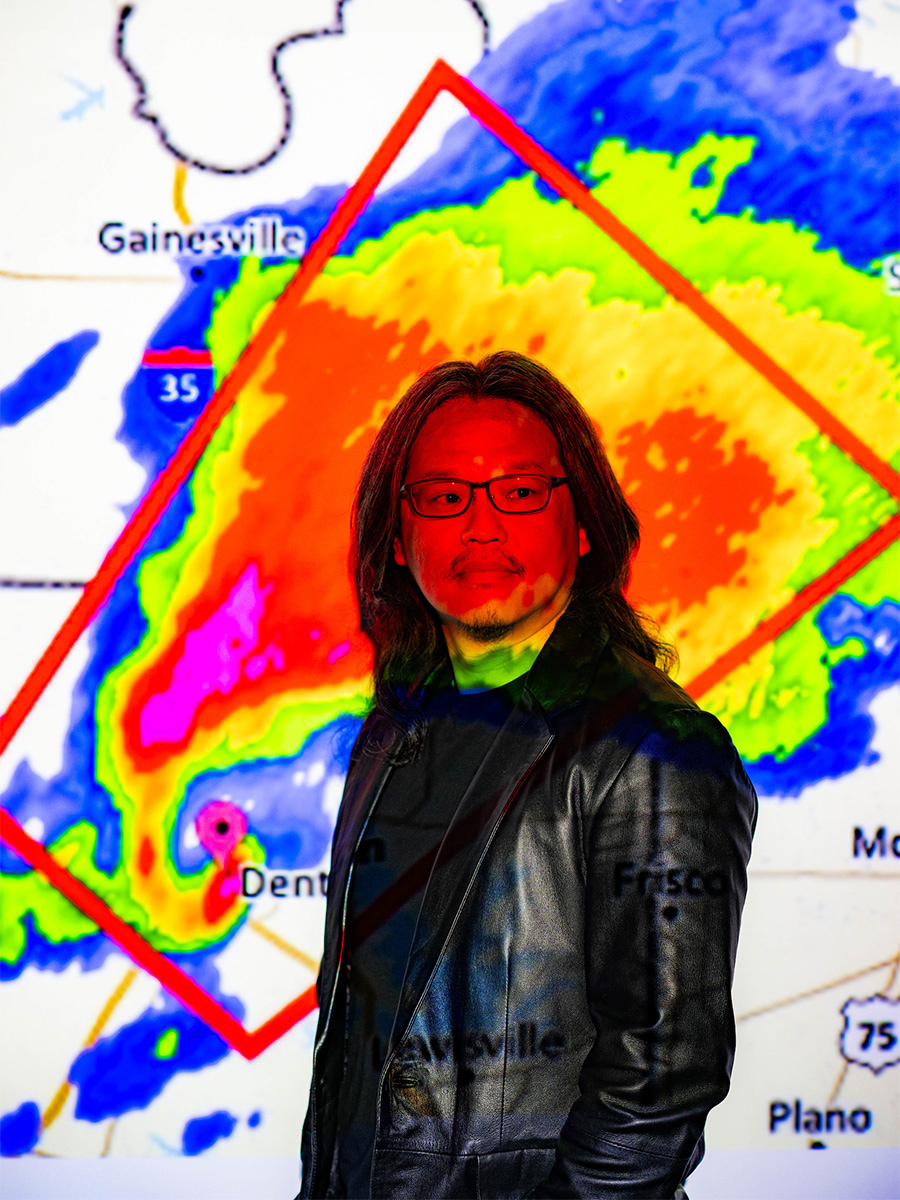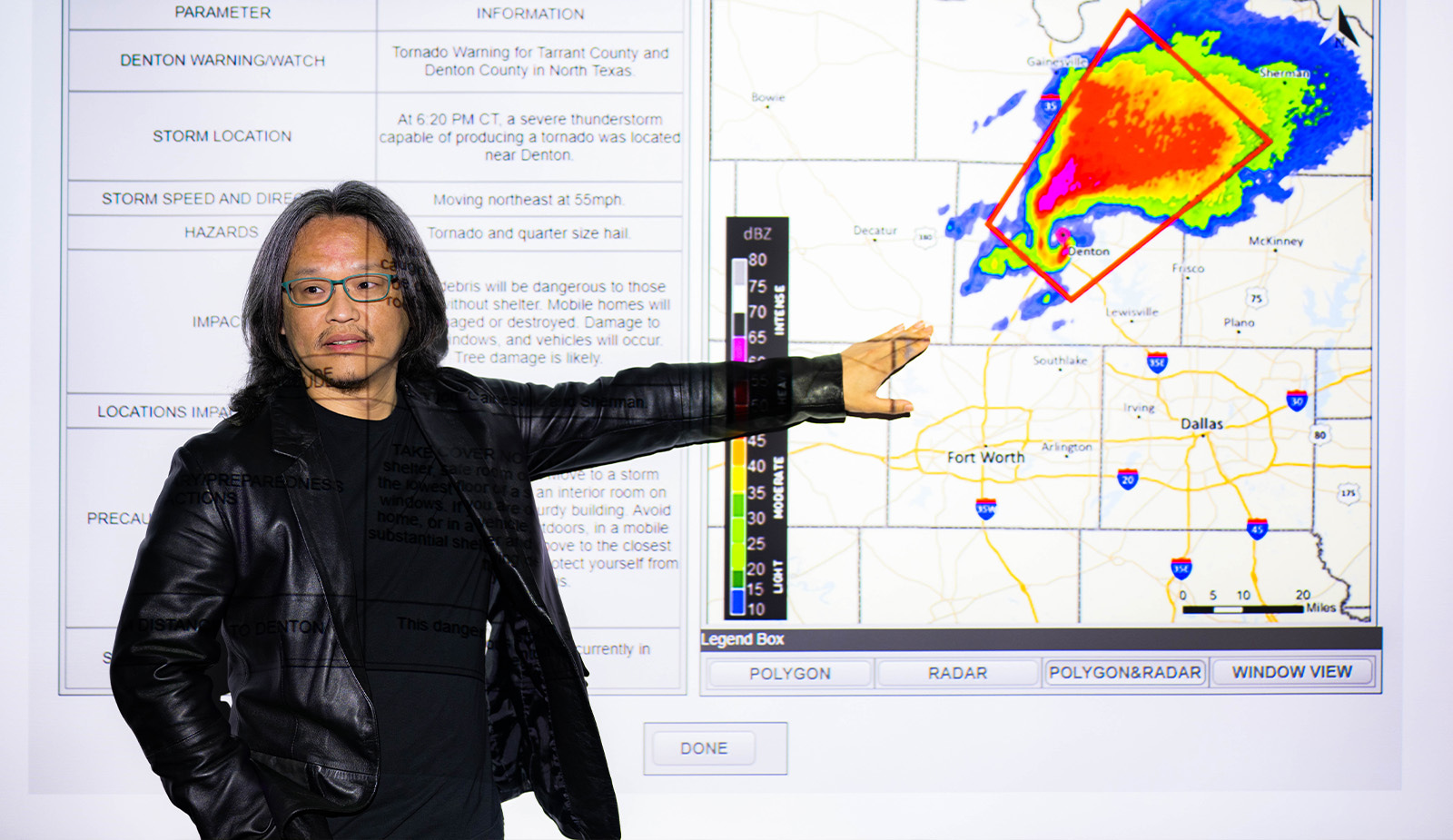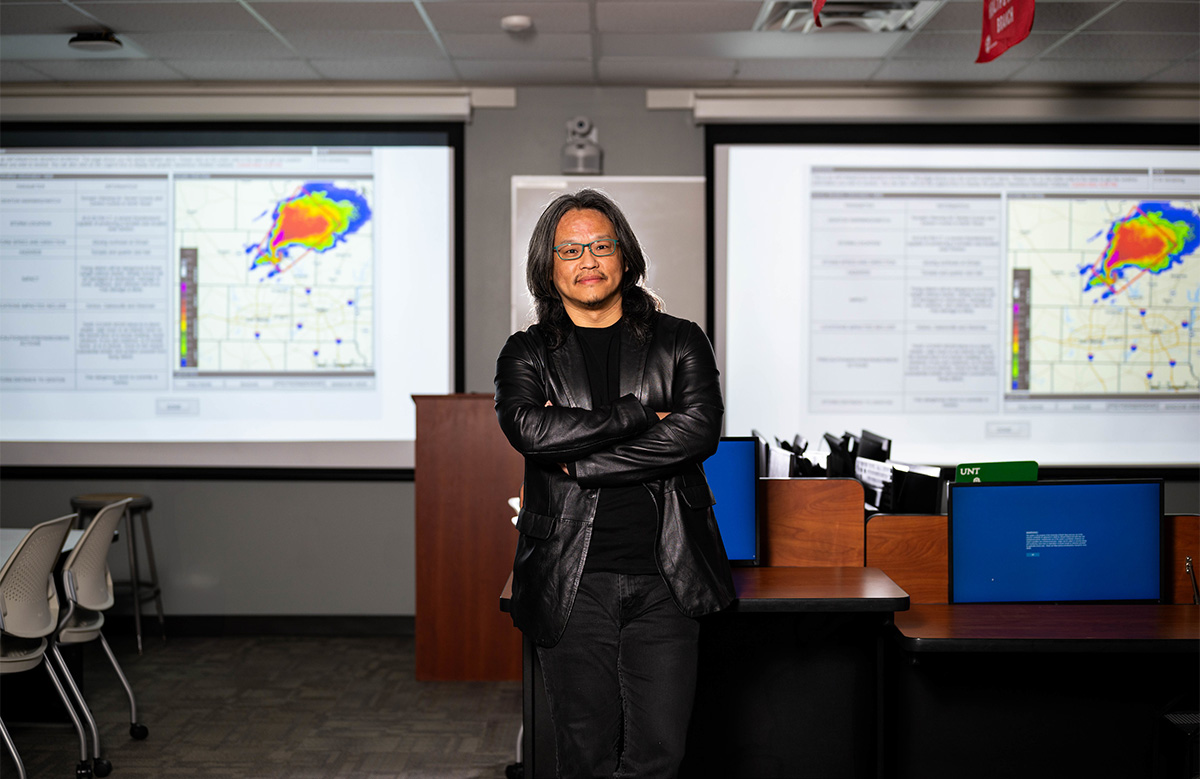Monday, May 20, 2024

Dr. Tristan Wu, Associate Professor in the College of Health & Public Service’s Emergency Management & Disaster Science department
 DENTON (UNT), Texas — The University of North Texas Department of Emergency Management and Disaster Science (EMDS) is conducting research that could transform the way Dallas-Fort Worth and
Denton County residents receive and respond to severe weather alerts.
DENTON (UNT), Texas — The University of North Texas Department of Emergency Management and Disaster Science (EMDS) is conducting research that could transform the way Dallas-Fort Worth and
Denton County residents receive and respond to severe weather alerts.
Associate Professor Tristan Wu has been studying how individuals within households communicate about risks during severe weather events. Wu and his team submitted their research idea to the U.S. National Science Foundation and were awarded a three-year grant to study how people search for tornado risk information and make decisions to protect themselves and their families. The study also researched how people respond to a rare disaster event.
“Understanding how people would react when facing different threat scenarios is very important to behavioral researchers, emergency managers, and meteorologists,” Wu said. “It can help them develop emergency plans and communicate more effectively with residents in risk areas.”
Wu collaborated with Haley Murphy from Oklahoma State University and Shih-Kai Huang from Jacksonville State University, both in related fields similar to UNT’s EMDS department. With funding secured, the team gathered data in Washington state in 2022. In 2023, they collected data in Denton County and the wider Dallas-Fort Worth area.
“We aimed to compare how individuals in these two regions gather storm information,” Wu said. “Washington residents rarely encounter tornado threats, whereas Texans face them frequently.”
 They recruited 134 couples — or 268 adults — who had been living together for at least
two to three years to respond to questions after viewing simulated severe weather
events together as a family. In the simulation, participants were exposed to a screen
with a tornado warning alert at the top and multiple boxes of information blurred
out. Then, machine learning AI tracked which boxes they chose to reveal, the order
of the reveal, how long a person looks at an information box, and how much information
they chose to reveal before discussing with their partner.
They recruited 134 couples — or 268 adults — who had been living together for at least
two to three years to respond to questions after viewing simulated severe weather
events together as a family. In the simulation, participants were exposed to a screen
with a tornado warning alert at the top and multiple boxes of information blurred
out. Then, machine learning AI tracked which boxes they chose to reveal, the order
of the reveal, how long a person looks at an information box, and how much information
they chose to reveal before discussing with their partner.
Additionally, the research team used machine learning AI to judge which information had the most impact on an individual’s protective action during tornado events. Wu has done studies like this over the past 20 years and says AI has been a major help to his research.
“Before, we were not able to link components of this information, preference, and decision-making together. AI can do this for us now,” Wu said.
The post-simulation questionnaire covered risk perception, hazard response, preparedness and demographics. Insights from the responses helped researchers understand decision-making during weather emergencies.
“Researchers have long focused on post-disaster surveys to assess household behaviors after an event. This approach has limitations because it does not provide insight into the decision-making process within households during the disaster itself,” Wu said. “This study uses an experimental research design to directly observe these decision-making processes during real emergencies, specifically focusing on tornadoes.”
 The study revealed that in the North Texas region, study participants consistently
attempted to determine the storm’s whereabouts. Residents also seek out protective
action recommendations and additional risk information, such as potential threats
to their houses and family members. Meanwhile, study participants in Washington are
less likely to stay in a safe location in their house, and some attempt to leave the
house if necessary. Wu advises people residing in areas known for severe weather,
such as the DFW area, to develop a pre-determined severe weather plan.
The study revealed that in the North Texas region, study participants consistently
attempted to determine the storm’s whereabouts. Residents also seek out protective
action recommendations and additional risk information, such as potential threats
to their houses and family members. Meanwhile, study participants in Washington are
less likely to stay in a safe location in their house, and some attempt to leave the
house if necessary. Wu advises people residing in areas known for severe weather,
such as the DFW area, to develop a pre-determined severe weather plan.
“Go to a room with no windows, and if possible, a room in the middle of your home. Identify this area before a storm approaches,” Wu said. “If you have pets, make sure to have a plan to keep them safe too, when a storm hits.”
Wu hopes his research will contribute to the development of improved communication strategies for local officials, emergency managers and meteorologists, tailoring weather reporting to viewers’ risk information needs. These insights can inform teaching at UNT and improve public preparedness through enhanced graphics and messaging during disasters. UNT introduced the nation's first bachelor's degree program in emergency administration and planning. The university has forged education in the field, equipping graduates for jobs at the Federal Emergency Management Agency, Environmental Protection Agency, American Red Cross, among others.
“If you find yourself outside or driving, there are some myths that you should go under a bridge, like in the movie Twister. This is a dangerous idea. Instead, try to find the nearest building and shelter-in-place,” Wu said. “Educate yourself on where your local and nearest tornado shelters are and make sure your phone or electronic device is charged when a storm is coming so you can check live weather updates.”
UNT News Service Phone Number: (940) 565-2108
Media Contacts:
Chelsey Gilbert
Chelsey.Gilbert@unt.edu
940-369-7019
From UNT News – Public Service